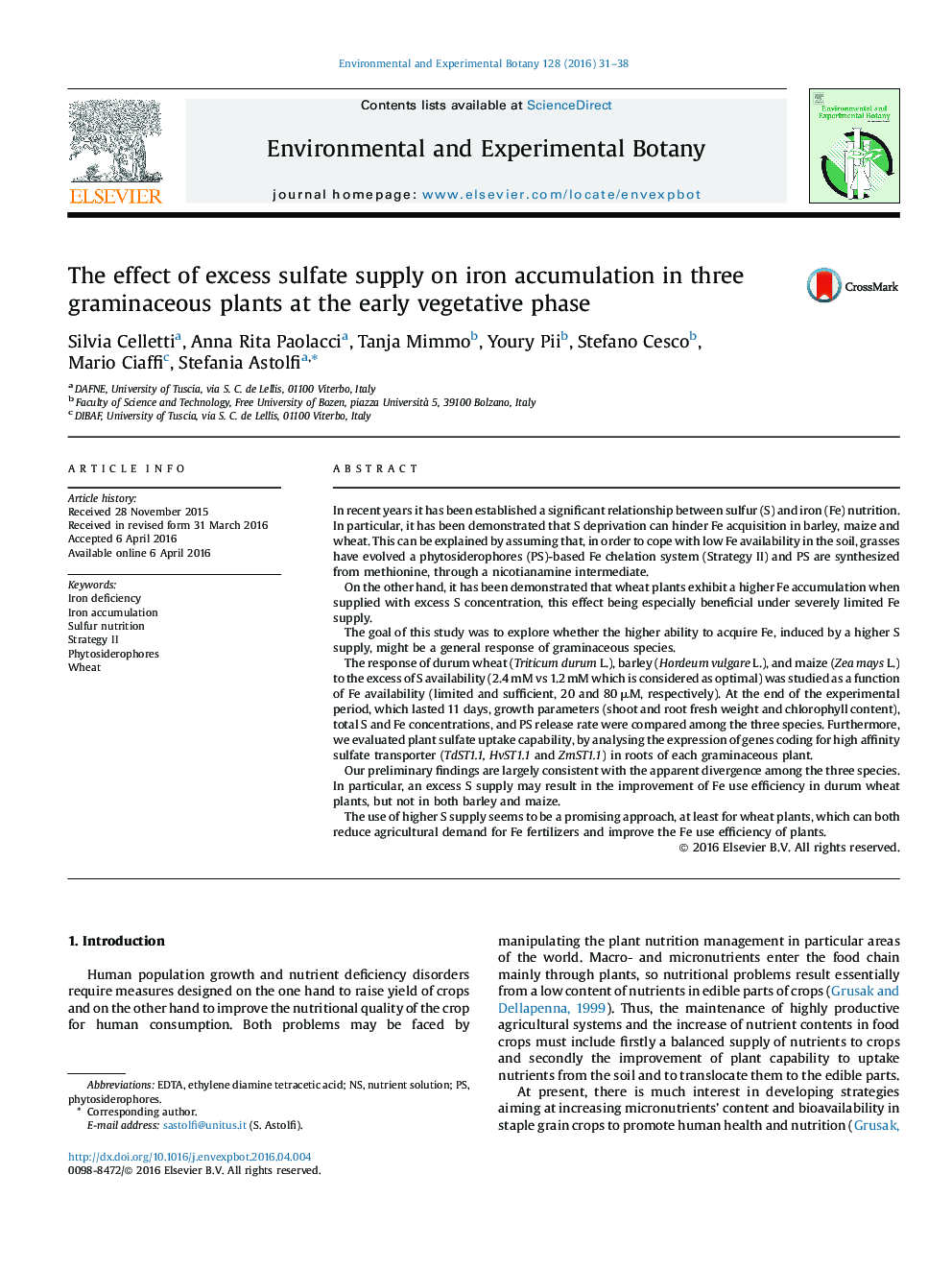| کد مقاله | کد نشریه | سال انتشار | مقاله انگلیسی | نسخه تمام متن |
|---|---|---|---|---|
| 4554078 | 1628049 | 2016 | 8 صفحه PDF | دانلود رایگان |
• Three grasses were exposed to S supply that doubled optimal one (2.4 vs 1.2 mM).
• Physiological responses to super-optimal S supply differs in graminaceous species.
• In shoots of durum wheat Fe accumulation increased by increasing S availability.
• Fe deficiency and excess S supply showed additive effect on S accumulation in wheat.
• ST1.1 expression is induced in roots of super-optimal S supplied plants.
In recent years it has been established a significant relationship between sulfur (S) and iron (Fe) nutrition. In particular, it has been demonstrated that S deprivation can hinder Fe acquisition in barley, maize and wheat. This can be explained by assuming that, in order to cope with low Fe availability in the soil, grasses have evolved a phytosiderophores (PS)-based Fe chelation system (Strategy II) and PS are synthesized from methionine, through a nicotianamine intermediate.On the other hand, it has been demonstrated that wheat plants exhibit a higher Fe accumulation when supplied with excess S concentration, this effect being especially beneficial under severely limited Fe supply.The goal of this study was to explore whether the higher ability to acquire Fe, induced by a higher S supply, might be a general response of graminaceous species.The response of durum wheat (Triticum durum L.), barley (Hordeum vulgare L.), and maize (Zea mays L.) to the excess of S availability (2.4 mM vs 1.2 mM which is considered as optimal) was studied as a function of Fe availability (limited and sufficient, 20 and 80 μM, respectively). At the end of the experimental period, which lasted 11 days, growth parameters (shoot and root fresh weight and chlorophyll content), total S and Fe concentrations, and PS release rate were compared among the three species. Furthermore, we evaluated plant sulfate uptake capability, by analysing the expression of genes coding for high affinity sulfate transporter (TdST1.1, HvST1.1 and ZmST1.1) in roots of each graminaceous plant.Our preliminary findings are largely consistent with the apparent divergence among the three species. In particular, an excess S supply may result in the improvement of Fe use efficiency in durum wheat plants, but not in both barley and maize.The use of higher S supply seems to be a promising approach, at least for wheat plants, which can both reduce agricultural demand for Fe fertilizers and improve the Fe use efficiency of plants.
Journal: Environmental and Experimental Botany - Volume 128, August 2016, Pages 31–38
